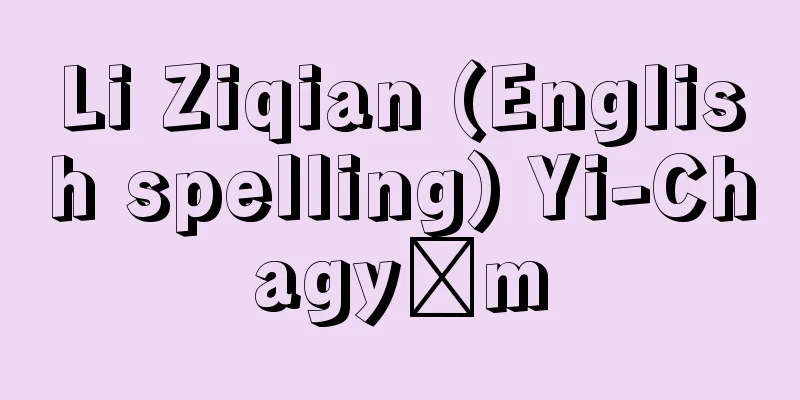Nagayoshi Miyoshi

|
Year of death: 7/4/1564 (8/10/1564) Year of birth: 1522.3.10 A feudal lord during the Sengoku period. His father was Miyoshi Motonaga, Shugodai (deputy governor) of Awa and Yamashiro. His childhood name was Senkumamaru, he was commonly known as Magojiro, and his real name was originally Norinaga. He served as Iga no Kami, Chikuzen no Kami, and Shuri-no-taifu. His father Motonaga was shunned by his lord, Hosokawa Harumoto, in Tenbun 1 (1532), and died an untimely death in June of the same year in an attack by the Ikko Ikki rebels. However, Nagayoshi showed extraordinary military strategy and power the following year at the age of 12 by mediating a peace agreement between the Hongan-ji Temple and Harumoto, and in October of the 3rd year, he returned to his enemy, Harumoto, with the mediation of Kizawa Nagamasa. In the 8th year, he temporarily rebelled against Harumoto, but in August he became the lord of Koshimizu Castle in Settsu and Shugodai (deputy governor) of the western half of Settsu. In March of the 11th year, he defeated and killed Nagamasa at Kawachi Taihei-ji Temple, and grew to become the most powerful of Harumoto's vassals. In July of the same year, he defeated the allied forces of Hosokawa Ujitsuna and Yusa Naganori at the Battle of Settsu Shariji Temple, and on this momentum, he defected from Harumoto and supported Ujitsuna, and in June of the same year, he won a great victory over Harumoto's forces at the Battle of Eguchi in Settsu, entered Kyoto, and became the ruler of Japan. Over the next few years, he alternated between resistance and peace with Shogun Ashikaga Yoshiteru and Hosokawa Harumoto, but in July of the 22nd year, he defeated the allied forces of Yoshiteru and Harumoto at Reizan in Kyoto, exiled the Shoguns to Omi, and established a de facto dictatorship. The victories at Eguchi and Reizan were significant as they dismantled the Kyoto Chosō family tyranny that had determined politics in the Kinai region since 1493, and envisioned a power that would become the model for the later government of Oda Nobunaga. From then until the end of 1558, with the assistance of Ise Sadayoshi, the chief steward of the former Muromachi Shogunate, he ruled as the highest authority in the Kinai region, ruling with an autocratic government, and his territorial claims extended to seven provinces: Yamashiro, Tamba, Settsu, Izumi, Awaji, Sanuki, and Awa. At the end of 1558, he made peace with Shogun Yoshiteru and allowed him to return to Kyoto. Although he lost Yamashiro in the same year, he annexed Izumi in Kawachi the following year and Yamato the year after that, and moved his base from Akutagawa in Settsu to Imoriyama in Kawachi, growing into a great daimyo on a par with the Hojo clan in terms of the number of territorial claims he held. His management of his territory was lukewarm, as he did not eradicate the old powers, and while he possessed the Sakai and Ataka navies and the most advanced military technology, such as firearms, he also had a unique character, such as accepting Christians. However, in his later years, he was overwhelmed by the rise of the head retainer Matsunaga Hisahide, lost his eldest son Yoshioki, and died of illness in despair while struggling to reconcile with the Shogun Yoshiteru. He excelled in literature and was also a master of linked verse. (Akira Imaya) Source: Asahi Japanese Historical Biography: Asahi Shimbun Publications Inc. About Asahi Japanese Historical Biography |
|
没年:永禄7.7.4(1564.8.10) 生年:大永2.2.13(1522.3.10) 戦国大名。父は阿波・山城守護代三好元長。幼名千熊丸,通称孫次郎,実名ははじめ範長。伊賀守,筑前守,修理大夫。父元長は天文1(1532)年主細川晴元に疎まれ,同6月一向一揆の攻撃で非業の死を遂げたが,長慶は翌年12歳にして早くも本願寺と晴元の講和を斡旋するなど軍略と勢威に非凡さをみせ,同3年10月には木沢長政の仲介で仇の晴元に帰参した。同8年一時晴元に背くが,8月摂津越水城主となり摂津西半国守護代となる。同11年3月には河内太平寺で長政を敗死させ,晴元被官中最大勢力に成長した。同16年7月,摂津舎利寺の合戦で細川氏綱,遊佐長教の連合軍を破り,その勢いで晴元から離反,氏綱を擁し,同18年6月摂津江口の戦で晴元軍に大勝,入京して天下人となる。その後数年間は将軍足利義輝,細川晴元らと抗戦・和睦を繰り返すが,同22年7月義輝・晴元連合軍を京都霊山に破って将軍らを近江へ追放,事実上の独裁政権を樹立した。江口と霊山の戦勝は,明応2(1493)年以来畿内政治を規定してきた細川宗家による京兆家専制を解体し,のちの織田信長政権のモデルとなる権力を構想したもので意義は大きい。 以後永禄1(1558)年末まで,旧室町幕府政所執事伊勢貞孝らの補佐を得ながら畿内の最高権力者として専制政治を敷き,分国は山城,丹波,摂津,和泉,淡路,讃岐,阿波の7カ国におよんだ。永禄1年末には将軍義輝と和してその還京を許した。同年山城を失うが翌年河内和泉を,翌々年には大和を併合,本拠を摂津芥川から河内飯盛山に移し,分国数では北条氏と並ぶ大大名に成長する。その領国経営は旧勢力根絶には至らず微温的施策にとどまり,堺や安宅水軍を擁し鉄砲など最先端の軍事技術を保有する半面,キリシタンを受容するなど特異な性格を持った。しかし晩年は家宰松永久秀の台頭に押され,嫡子義興を失い,将軍義輝との調整に悩みながら失意のうちに病死した。文芸に秀で,連歌の名手でもあった。<参考文献>今谷明『戦国三好一族』 (今谷明) 出典 朝日日本歴史人物事典:(株)朝日新聞出版朝日日本歴史人物事典について 情報 |
>>: Miyoshi Tameyatsu - Miyoshi Tameyatsu
Recommend
Electronic scale (electronic balance) - Denshibakari (English spelling) electronic scale
A general term for scales that incorporate electro...
Circaeaster
…The veins of gymnosperms are often bifurcated, a...
Station front inn
A Japanese film released in 1958. Directed by Toyo...
Mobile library - Ido toshokan
Also known as a mobile library or traveling libra...
Porridge tree - Kayunoki
① = Kayu-zue (rice porridge stick) ※Makura (end of...
Kushiro Plain - Kushiro Heiya
An alluvial plain located downstream of the Kushi...
Inversion - Hanten (English spelling) inversion
It has three meanings: mathematical term, physica...
Enterobacteriaceae
…The distribution of bacteria in the intestines i...
Iris Heel - Ayamekazura
…The custom of competing to hunt medicinal herbs ...
Heliopolis (Baalbek) (English spelling) Heliopolis
…It is known for the remains of an ancient religi...
Tribal art
Tribal art has been called "primitive art&quo...
Kussmaul, A. (English spelling) KussmaulA
...It was Desormeaux who coined the term endoscop...
Ekman spiral - Ekman spiral
…On the ocean surface, the ocean current flows 45...
Watanabe Suiha
Haiku poet. Born in Tokyo. Real name Yoshi. Eldes...
alfr
…The dwarves live underground or among rocks. The...









